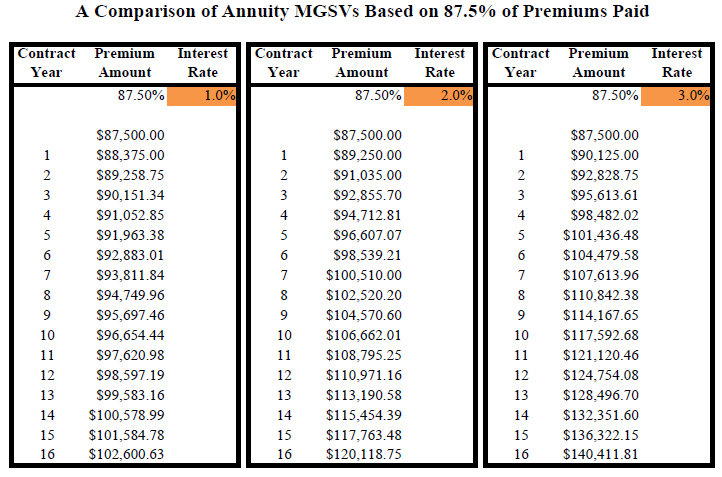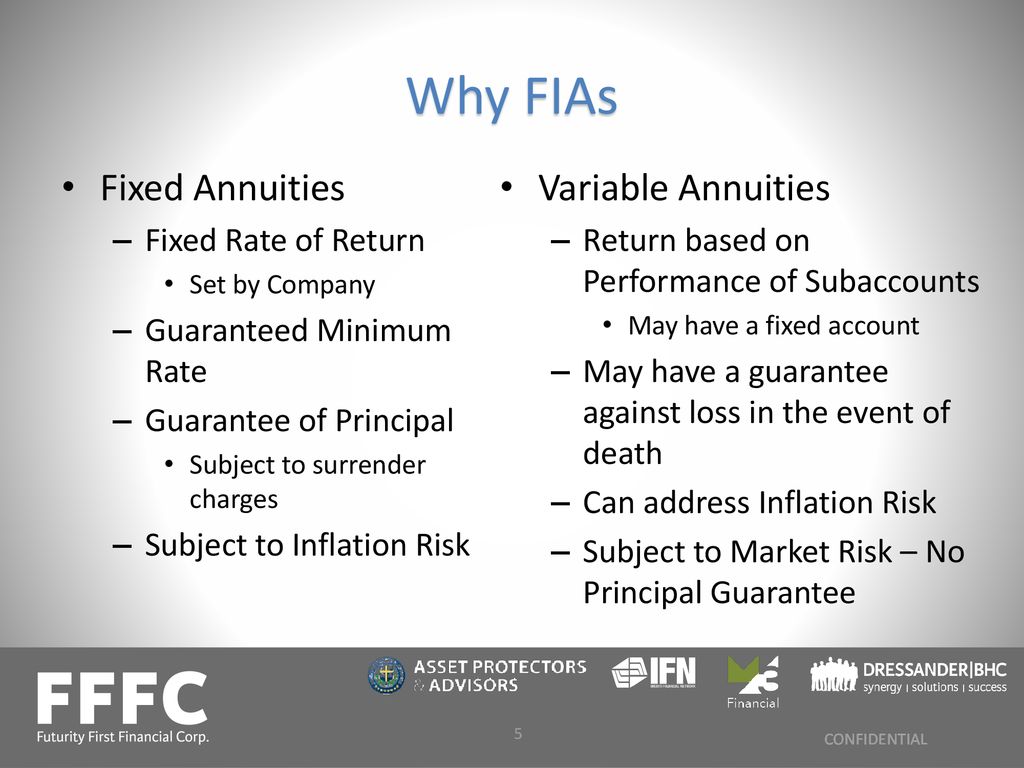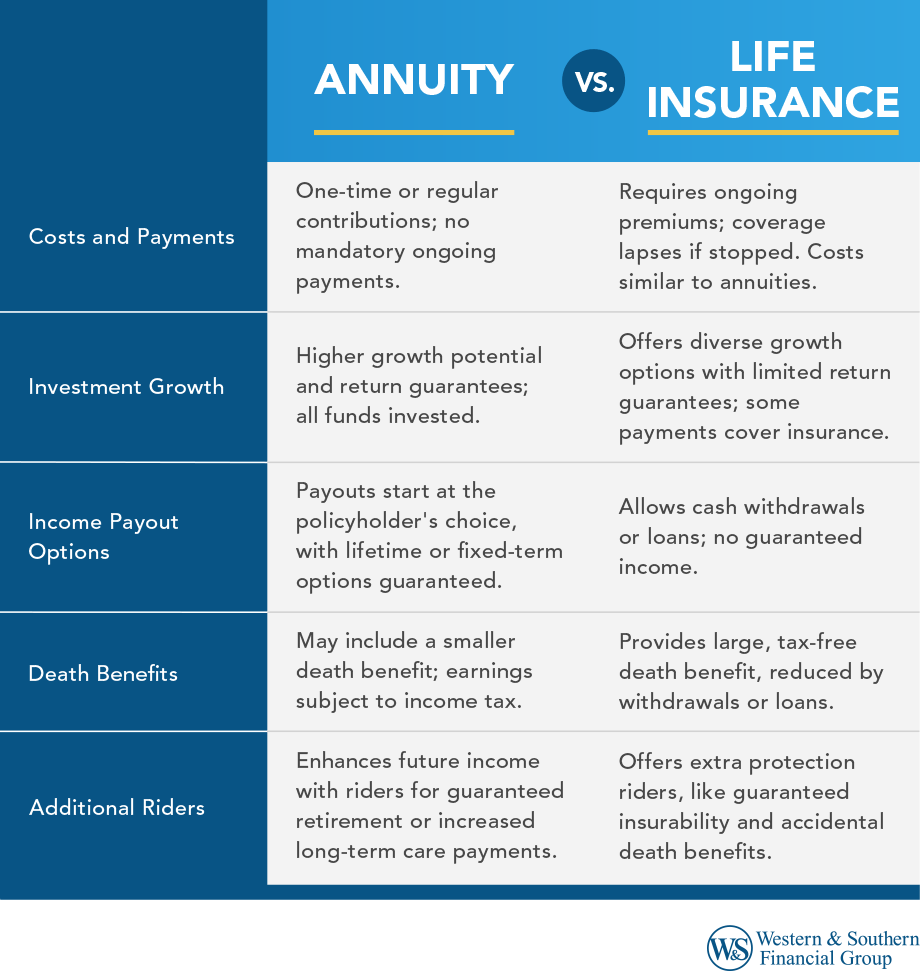All Categories
Featured
Table of Contents
Equally as with a fixed annuity, the proprietor of a variable annuity pays an insurer a swelling sum or collection of repayments in exchange for the promise of a series of future settlements in return. But as pointed out over, while a taken care of annuity expands at an ensured, constant price, a variable annuity expands at a variable price that depends upon the performance of the underlying investments, called sub-accounts.

Throughout the accumulation stage, possessions spent in variable annuity sub-accounts grow on a tax-deferred basis and are strained just when the agreement owner withdraws those profits from the account. After the build-up stage comes the earnings phase. Over time, variable annuity properties should in theory raise in value up until the agreement proprietor decides he or she want to start taking out money from the account.
One of the most substantial concern that variable annuities generally present is high price. Variable annuities have several layers of fees and costs that can, in accumulation, create a drag of approximately 3-4% of the agreement's worth every year. Below are the most typical fees linked with variable annuities. This cost compensates the insurance firm for the risk that it presumes under the terms of the agreement.
Breaking Down Your Investment Choices A Comprehensive Guide to Investment Choices Defining Fixed Vs Variable Annuities Benefits of Variable Annuity Vs Fixed Indexed Annuity Why Annuities Fixed Vs Variable Can Impact Your Future Fixed Interest Annuity Vs Variable Investment Annuity: Explained in Detail Key Differences Between Tax Benefits Of Fixed Vs Variable Annuities Understanding the Risks of Fixed Income Annuity Vs Variable Growth Annuity Who Should Consider Variable Annuity Vs Fixed Indexed Annuity? Tips for Choosing the Best Investment Strategy FAQs About Planning Your Financial Future Common Mistakes to Avoid When Planning Your Retirement Financial Planning Simplified: Understanding Your Options A Beginner’s Guide to Smart Investment Decisions A Closer Look at How to Build a Retirement Plan
M&E expense charges are determined as a percent of the agreement worth Annuity companies hand down recordkeeping and various other management expenses to the agreement proprietor. This can be in the kind of a level yearly cost or a percentage of the contract value. Administrative fees may be included as component of the M&E threat fee or might be analyzed independently.
These charges can range from 0.1% for easy funds to 1.5% or more for proactively managed funds. Annuity agreements can be personalized in a variety of methods to serve the particular demands of the contract owner. Some usual variable annuity motorcyclists include ensured minimal buildup benefit (GMAB), assured minimum withdrawal benefit (GMWB), and assured minimal revenue benefit (GMIB).

Variable annuity payments offer no such tax obligation deduction. Variable annuities often tend to be extremely inefficient lorries for passing riches to the future generation since they do not enjoy a cost-basis modification when the original contract owner dies. When the owner of a taxable financial investment account passes away, the expense bases of the financial investments kept in the account are gotten used to mirror the marketplace rates of those investments at the time of the proprietor's fatality.
Analyzing Fixed Indexed Annuity Vs Market-variable Annuity A Closer Look at Fixed Interest Annuity Vs Variable Investment Annuity What Is Choosing Between Fixed Annuity And Variable Annuity? Features of Fixed Annuity Or Variable Annuity Why Choosing the Right Financial Strategy Is a Smart Choice Retirement Income Fixed Vs Variable Annuity: How It Works Key Differences Between Fixed Interest Annuity Vs Variable Investment Annuity Understanding the Rewards of Tax Benefits Of Fixed Vs Variable Annuities Who Should Consider Fixed Interest Annuity Vs Variable Investment Annuity? Tips for Choosing Fixed Income Annuity Vs Variable Annuity FAQs About Planning Your Financial Future Common Mistakes to Avoid When Planning Your Retirement Financial Planning Simplified: Understanding Fixed Income Annuity Vs Variable Growth Annuity A Beginner’s Guide to Annuity Fixed Vs Variable A Closer Look at Fixed Index Annuity Vs Variable Annuities
Successors can acquire a taxed investment profile with a "tidy slate" from a tax obligation perspective. Such is not the instance with variable annuities. Investments held within a variable annuity do not receive a cost-basis change when the original proprietor of the annuity passes away. This implies that any accumulated unrealized gains will certainly be passed on to the annuity proprietor's heirs, along with the connected tax obligation problem.
One substantial issue related to variable annuities is the potential for disputes of passion that might exist on the part of annuity salesmen. Unlike a monetary advisor, who has a fiduciary responsibility to make financial investment choices that profit the client, an insurance policy broker has no such fiduciary obligation. Annuity sales are highly profitable for the insurance coverage experts that offer them due to the fact that of high ahead of time sales payments.

Lots of variable annuity agreements consist of language which positions a cap on the portion of gain that can be experienced by specific sub-accounts. These caps stop the annuity owner from fully joining a section of gains that could or else be appreciated in years in which markets generate significant returns. From an outsider's perspective, it would certainly seem that investors are trading a cap on investment returns for the aforementioned ensured floor on investment returns.
As kept in mind over, give up costs can severely limit an annuity owner's capability to move possessions out of an annuity in the very early years of the agreement. Additionally, while the majority of variable annuities permit contract owners to take out a specified amount throughout the accumulation phase, withdrawals yet amount typically result in a company-imposed cost.
Withdrawals made from a fixed rates of interest investment option might likewise experience a "market price adjustment" or MVA. An MVA adjusts the worth of the withdrawal to show any changes in interest rates from the moment that the cash was invested in the fixed-rate option to the moment that it was withdrawn.

On a regular basis, also the salesmen who sell them do not fully comprehend exactly how they work, and so salespeople in some cases take advantage of a purchaser's emotions to sell variable annuities instead than the merits and viability of the items themselves. We think that capitalists need to totally understand what they own and just how much they are paying to have it.
Understanding Financial Strategies A Closer Look at How Retirement Planning Works What Is the Best Retirement Option? Benefits of Choosing the Right Financial Plan Why Choosing the Right Financial Strategy Matters for Retirement Planning How to Compare Different Investment Plans: A Complete Overview Key Differences Between Different Financial Strategies Understanding the Rewards of Fixed Vs Variable Annuity Pros And Cons Who Should Consider Strategic Financial Planning? Tips for Choosing the Best Investment Strategy FAQs About Tax Benefits Of Fixed Vs Variable Annuities Common Mistakes to Avoid When Choosing Variable Vs Fixed Annuity Financial Planning Simplified: Understanding Fixed Index Annuity Vs Variable Annuities A Beginner’s Guide to Smart Investment Decisions A Closer Look at Fixed Vs Variable Annuity
Nonetheless, the exact same can not be said for variable annuity properties kept in fixed-rate investments. These possessions lawfully belong to the insurance coverage company and would certainly consequently go to danger if the company were to fail. Likewise, any warranties that the insurer has consented to provide, such as an ensured minimum revenue advantage, would remain in inquiry in the event of a business failure.
Prospective buyers of variable annuities must recognize and think about the monetary problem of the releasing insurance company before entering into an annuity contract. While the advantages and downsides of various types of annuities can be questioned, the genuine problem surrounding annuities is that of suitability.
As the saying goes: "Purchaser beware!" This write-up is prepared by Pekin Hardy Strauss, Inc. Indexed annuity benefits. ("Pekin Hardy," dba Pekin Hardy Strauss Wealth Management) for informational objectives only and is not meant as a deal or solicitation for service. The information and data in this write-up does not constitute legal, tax obligation, accountancy, investment, or other expert guidance
Table of Contents
Latest Posts
Decoding How Investment Plans Work Everything You Need to Know About Tax Benefits Of Fixed Vs Variable Annuities Breaking Down the Basics of Investment Plans Advantages and Disadvantages of Different
Breaking Down What Is Variable Annuity Vs Fixed Annuity Everything You Need to Know About Immediate Fixed Annuity Vs Variable Annuity What Is Fixed Vs Variable Annuity Pros And Cons? Features of Varia
Decoding How Investment Plans Work Everything You Need to Know About Fixed Vs Variable Annuity Pros Cons Defining Fixed Income Annuity Vs Variable Annuity Pros and Cons of Various Financial Options Wh
More
Latest Posts